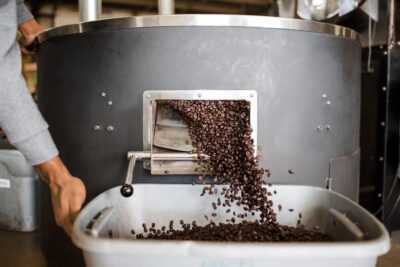Regarding Bionic Breakthroughs, global energy relies heavily on oil, making oil extraction a crucial industry. Traditionally, human-operated drilling and exploration methods have significantly met the world’s energy demands. However, these methods have challenges, including safety risks, inefficiencies, and environmental concerns. Recently, there has been a notable paradigm shift.
More so with the emergence of robotics and automation in oil extraction. It’s easy to become resigned to your fate if you’re an amputee or born with a backbreaking disease. However, recent breakthroughs in material science are giving people with disabilities reason to believe in an entirely different future. Bionic combines the prefix ‘bio’—meaning life—with the ‘nics’ of electronics.
Some Bionic Breakthroughs in 3D Printing help create a structure based on the patient’s CT data to create the framework for the artery’s growth. This creates a scaffold that mimics the artery’s exact position in the body and will eventually dissolve to be replaced by the body’s tissue. As such, the resultant arterial tissue will be anatomically bespoke to fit the target patient’s body precisely.
With that in mind, this article explores the significance of Bionic Breakthroughs and the impact of robotics in transforming business sectors such as the oil extraction industries. If you want to learn, oil and Trading of Bitcoin can be profitable with the proper knowledge and strategy. Still, there are a few more essential applications of the futuristic innovative Bionic Breakthroughs.
Some Historical Perspectives And Bionic Breakthroughs In Futuristic Machines
Realistically, Bionics Queensland is fast becoming Australia’s vibrant hub of bionics innovation. According to an article by the HospitalHealth team, it has a host of MedTech talent committed to addressing people’s medical and health needs worldwide. For instance, it’s committed to people living with complex disabilities, chronic diseases, and previously untreatable health conditions.
As mentioned, Bionics is the branch of Biomedical Engineering that brings the worlds of biology and electronics together. Generally, Bionics includes the development of neural prostheses that address a range of sensory and neurological disorders through artificial stimulation of neurons. Famous examples are the bionic ear and bionic eye, which enable functional hearing and vision.
The word Bionic, coined by Jack E. Steele in August 1958, is a portmanteau from biology and electronics which was popularized by the 1970s U.S. television series The Six Million Dollar Man and The Bionic Woman, both based on the novel Cyborg by Martin Caidin. On that note, Bionics is the study of mechanical systems that help function like living organisms or parts of living organisms.
Usually, Bionics includes the development of neural prostheses that address a range of sensory and neurological disorders through artificial stimulation of neurons. Famous examples are the bionic ear and bionic eye, which enable functional hearing and vision. Doctors can use soft robotics in the laboratory to impart mechanical stimulation to the tissue to grow/work as it should.
The Notable Bionic Robotics Technology Example Applications In Realtime
As mentioned, Bionics Queensland — a not-for-profit launched in 2019 — is playing a pivotal role in identifying and accelerating human bionic innovations and is on a pathway to fast-track neural and AI-enabled bionic devices, myoelectric and robotic limbs, biofabricated implants and artificial organs, prosthetics and wearables. Of course, Collaborative Robots (Cobots) are in use all over.
Collaborative Robots (Cobots) can optimize resource utilization and minimize downtime. For example, Professors Ji Ma and Ibrahim Karaman from Texas A&M University designed a game-changing device to improve Scoliosis treatment among children dramatically. At all costs, a super elastic titanium-niobium alloy helped them create a five times more flexible device than any existing model.
The alloy allows the body’s natural movement and adjusts itself depending on the stress the growing spine applies. Although still under study, the device can potentially reduce the number of surgeries required and give kids a better shot at a normal, healthy childhood. Remember, a synthetic graft is currently the primary alternative for those without enough healthy vascular tissues.
Today, countless research organizations and companies are putting their efforts and resources into developing bionic material-driven devices through the help of innovative metal-integrated technologies. At the same time, they also effortlessly foster the best methods, techniques, and practices to use stimulation to achieve the desired therapeutic outcome effectively. Endless potential!
1. Robotics Use In Oil Extraction
A brief look at the history of oil extraction reveals that it was primarily a manual process for many decades. Workers used traditional drilling techniques, which were labor-intensive and fraught with risks. Human-operated drilling rigs faced accidents, inefficient exploration, and the need for skilled labor. Integrating robotics and automation systems into oil extraction is essential.
It has marked a significant turning point. Robots now play a crucial role in drilling, exploration, and production. These machines come in various forms, from autonomous drones to underwater vehicles, designed to operate in remote and hazardous environments. The adoption of robotics in oil extraction offers numerous advantages. One of the most significant benefits is increased efficiency.
Robots can work around the clock without breaking, leading to quicker results. Furthermore, they reduce the risk to human operators in hazardous environments, such as offshore drilling platforms. Cost-effectiveness is another crucial advantage. Several successful collaborative robotic automation applications have demonstrated the potential of this technology in oil extraction.
For instance, Autonomous Underwater Vehicles (AUVs) equipped with sensors and cameras can explore deep-sea environments, collecting data and samples with precision. Additionally, robotic drilling rigs have improved efficiency and safety in drilling.
2. Bringing Bionic Hands To Life
Unfortunately, the average cost of a cobot robot is about $35,000. Cobots are robots designed to interact with human beings in a shared space to work alongside them on the same tasks. The first developed cobots guaranteed human safety by having no interior source of motive power. However, investing in them can be time-demanding, daunting, and costly for investors.
Fortunately, expert professors such as Stefan Seelecke bring science fiction to life from his lab at Saarland University in Germany. One thing is sure: He has created an incredible bionic hand with responsive muscles making waves across the scientific community.
Until now, artificial hands have tended to be heavy, relatively inflexible, loud, and expensive. As a result, this innovative invention made the technology more appealing for industrial purposes than to solve the mobility challenges of disabled veterans or other everyday people.
3. Metals With Memory Muscles
In layman’s language, some Advanced Bionic Technology Centers are already growing bespoke Tissue-Engineered Vascular Grafts (TEVGs) through soft robotics to treat Peripheral Artery Disease (PAD), which affects 200 million people worldwide each year. Currently, PAD is treated with stents or an autograft, which involves excising an artery from another body part.
Then, this is used to replace the diseased artery. The essential ingredient in Seeleck’s bionic hand is bundles of ultrafine nickel-titanium alloy wires. Known as ‘shape-memory alloy’ (SMA), these wires can ‘remember’ shapes and return to them upon command. Alloy wires are critical to the device’s ability to tense and flex naturally, like a human hand, and remain agile in restricted spaces.
‘If the wire becomes warm, which happens, for instance, when it conducts electricity, the material transforms its lattice structure, causing it to contract like a muscle,’ says Seelecke. Although Seelecke is still developing his prototype and is far from commercialization, his device gives new hope to disabled people worldwide.
4. A Whole New Spine Replacement
Researchers in the United States use alloy wires in a totally different but equally excellent way. Scoliosis is a condition that turns a straight spine into an S or C shape, creating discomfort for patients. Surgical treatment is available for severe cases, but outcomes are often poor among children because their bones are still growing. That is until shape-memory alloys came into the picture.
Children with severe scoliosis can spend their entire childhood undergoing surgical procedures to correct the curve in their spine. Surgeons implant metallic growing rods and expand them in bi-annual surgeries for the child’s growth. As the body moves, however, the screws attaching the rods to the bone often become loose, increasing the chances of additional complicated surgeries.
Remember, lifelong medication is often required after surgery. This is because synthetic grafts can cause complications in some patients as their bodies react adversely to the foreign material. Fortunately, some experts have developed an innovative approach to create anatomically and functionally bespoke TEVGs. Below are a few more examples of the use of Bionic technology.
5. Oil Drilling, Minerals And Gas Exploration
As mentioned, autonomous underwater vehicles, or AUVs, are independent underwater robots that dive deeper into our ocean beds for adventure, minerals/gas exploration, and oil drilling. Unlike remotely operated vehicles (ROVs), AUVs are untethered from a ship, allowing the robots to complete pre-planned missions without direct control from an operator.
Robotic drilling rigs and autonomous well control systems have become indispensable in drilling and production. Robotic drilling rigs can precisely execute drilling tasks, reducing human errors and enhancing drilling efficiency. Autonomous sound control systems continuously monitor and optimize production, responding to changes in reservoir conditions in real-time.
Exploration robots, including AUVs and drones, have revolutionized oil exploration. These machines can navigate challenging underwater or remote terrains, collecting data on potential oil reserves, geological formations, and environmental conditions. Their ability to operate autonomously enhances the accuracy and speed of exploration. There is also inspection and maintenance.
Pipeline inspection and maintenance are critical aspects of oil extraction. Robots with sensors and cameras can inspect pipelines for leaks, corrosion, and other defects without human intervention. This not only improves safety but also extends the lifespan of assets.
Some Notable Challenges And Limitations Universal Robots Help Address
Regarding Cobots Technology, Universal Robots is the world’s largest manufacturer, with almost half the market share. Technically, Universal Robots is a Danish manufacturer of more minor, flexible industrial collaborative robot arms based in Odense, Denmark. Since 2015, the company has been owned by American automatic test equipment designer and manufacturer Teradyne.
Given the ever-growing online marketplace, Cobots From Universal Robots enables companies of all sizes to use robotic automation in their production environments. Markedly, they help empower various Bionic breakthroughs coupled with innovative technologies for task automation. They released two different series with 7 different cobots—the CB3 series with the UR3, UR5 and UR10.
Moving toward the future, with the help of Bionic technologies from Universal Robots built off the same architecture as the UR20, the UR30 offers an extraordinary lift in a compact footprint with superior motion control, ensuring the perfect placement of large payloads. The next-generation cobot handles more tasks, fits more applications, and helps in more environments than ever.
Equally important, automating quality inspection increases measurement consistency and maintains high product quality levels. The repeatability of the UR robot arm’s down +/- 0.03 mm (30 microns) is perfect for automating quick-precision handling in quality inspection and testing applications. Be that as it may, below are a few more challenges Universal Robots helps manage.
(i). Machines Operation Technicality
While robotics has made significant strides in oil extraction, it has challenges. Developing and implementing robotic systems that can withstand harsh environments, extreme temperatures, and high pressures is technically demanding. Additionally, ensuring robust communication systems for remote operations remains a challenge.
(ii). Regulations And Safety Concerns
Robotic oil extraction introduces new regulatory and safety guides to ensure that robotic systems adhere to industry standards and regulations is essential. Safety protocols must be established to manage potential risks associated with autonomous operations.
(iii). Unlimited Skilled Labor Demands
As the industry adopts more automation and robotics, the role of skilled labor may evolve and help empower major Bionic Breakthroughs. Workers may need to acquire new skills to operate and maintain robotic systems, emphasizing the importance of workforce development and training programs.
(iv). Diversfieied Bionic Breakthroughs
Diversification can also be a challenge that limits various Bionic Breakthroughs per personalized needs. For example, we need discoveries in bionic mobility, such as a lightweight exoskeleton, a bionic glove to restore finger and hand movement, a device to help restore spinal sensation, plus technologies to improve hearing, spatial orientation, and emotional disorders.
(v). Limiting Advanced Medical Methods
The main problem with growing bespoke tissue-engineered vascular grafts is that 40% of those needing a graft do not have enough healthy vascular tissue for the procedure. Likewise, synthetic grafts are not currently able to match the mechanical properties of the artery and do not allow the tissue to regenerate. Thus, they may need replacing due to wear or if the patient is still growing. Ultimately, this leads to more surgeries, stressing the patient and the healthcare system.
The Bionic Breakthroughs Future Prospects And Innovative Designs
Repetitive, mundane, and ergonomically challenging tasks can be tedious and dangerous for workers; in almost any production hub, cobots significantly increase productivity. Moving them to new processes is fast and easy, giving you the agility to automate almost any manual task, including those with small batches or fast changeovers. They can reuse programs for recurrent tasks.
Generally speaking, robotics Bionic Breakthroughs have ushered in a transformative era in modern oil extraction, revolutionizing processes from exploration to production, ultimately leading to enhanced industry efficiency, safety, and cost-effectiveness. While challenges and limitations persist, ongoing investments in cutting-edge bionic technologies are crucial to overcoming these hurdles.
The future of robotics in oil extraction is promising. Emerging trends include the development of more advanced AI and machine learning algorithms to improve decision-making processes. Additionally, the industry is focusing on sustainable practices and reducing the environmental footprint of oil extraction. The integration of sustainable practices is becoming increasingly crucial.
This is especially true in oil extraction. Robotics can reduce environmental impact by minimizing oil spills, optimizing resource utilization, and monitoring emissions. Incorporating Artificial Intelligence (AI) and Machine Learning (ML) technologies will enable robotic systems to make data-driven decisions in real-time. This will lead to more efficient and adaptive oil extraction processes.
In Conclusion;
Note that the key to encouraging and fostering innovation in this field was the advent of the Bionics Queensland Challenge sometime back. For your information, held for the first time in 2020, the Bionic Breakthroughs Challenge brings together grassroots innovators, hospital clinicians, academic researchers, and industry practitioners to turn groundbreaking ideas into real solutions.
As a rule of thumb, we are confident that hosting the Challenge annually will boost Bionic Breakthroughs and progressively bring life-changing bionic devices and treatments to the market to transform lives. However, establishing a bionics lab of collaborative industry stakeholders, researchers, and scientists is invaluable. In particular, this can be helpful to engage leaders in this industry.
Resource Reference: Learn About How Profitable Bitcoin Trading Is In Detail
In addition, it can also foster interstate and offshore partners to come immediately toward sharing ideas in an exciting array of innovations. As mentioned, the future of oil extraction hinges on the seamless integration of advanced robotic systems underpinned by a commitment to sustainable practices. The Web Tech Experts community would like to salute all researchers for their efforts.
In particular, some personalities find genius ways to automate metals to help solve some of our most significant healthcare challenges. Ultimately, they remind us all that metals like nickel and titanium often go unseen. Otherwise, they are essential to countless healthcare, medical, and scientific discoveries fostered by robotics technology advancements that improve our lives.









